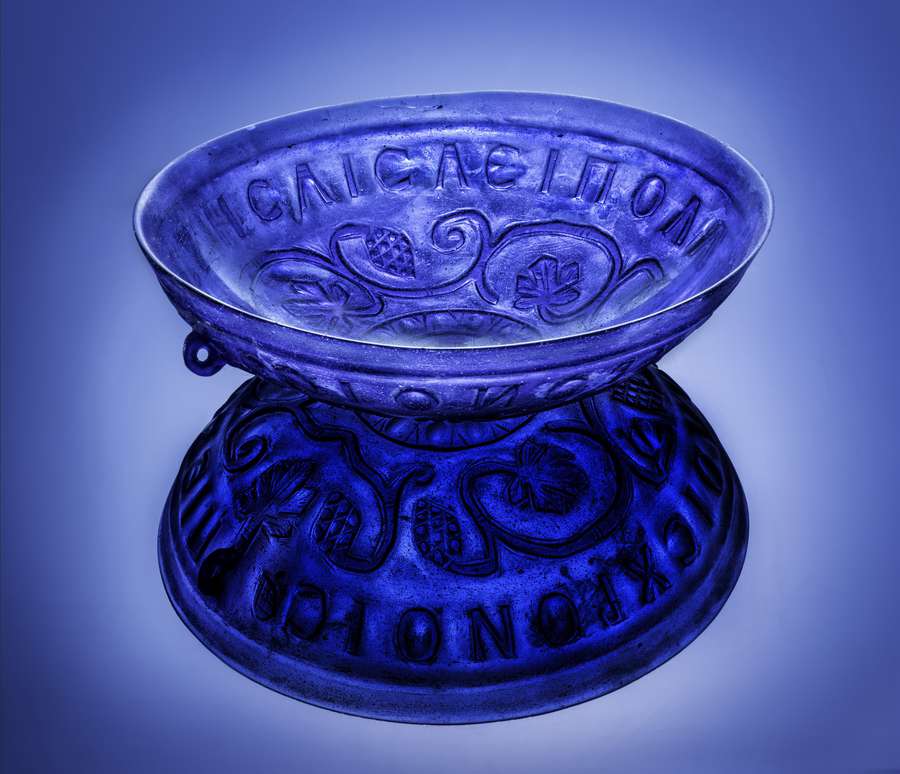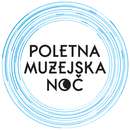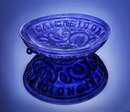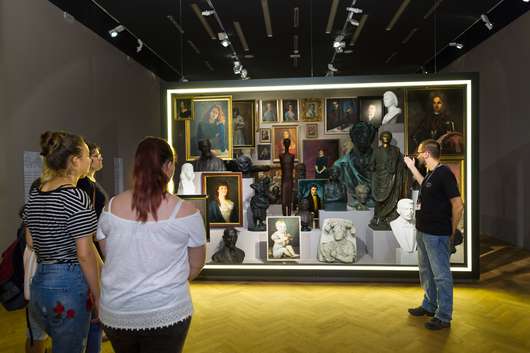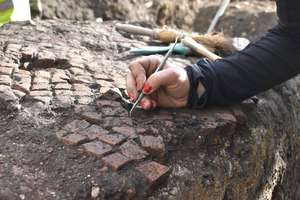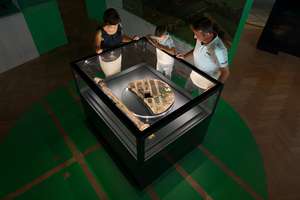The transparent blue glass bowl
Its Greek inscription reads: "Drink to live forever, for many years!"
The transparent blue glass bowl found next to the woman’s body. The 1,700-year old vessel is decorated on the outside with grapes, and vine leafs and tendrils. A Greek inscription on the inside of the bowl instructs the owner to “Drink to live forever, for many years!”
Like the Roman colonies in what is now northern Italy, the city of Emona had a rectangular layout, covered an area of just over 22 hectares, and was surrounded by high walls. Since the Romans kept the realms of the living and the dead strictly apart, cemeteries had no place inside the city. Emonan cemeteries were therefore situated along the four main approach roads.
The burial grounds along the northern approach road had several side branches. In one of these, stretching beneath present-day Gosposvetska Street, more than 340 inhumation graves were unearthed over a period of ten months, between August 2017 and June 2018. Many of the dead were buried in stone sarcophagi. Archaeologists had anticipated interesting discoveries at this location; but what they had not anticipated was the fascinating religious aspect of the remains uncovered: it was this that aroused the interest of the informed public and greatly contributed to our understanding of this part of Ljubljana’s history.
Emonan cemeteries, especially those dating to the late 4th and the 5th centuries CE, had not previously been sufficiently examined by archaeologists, so there had been a lack of expert discussion about them. For this reason, the most recent finds came as a real surprise to the archaeologists. What they discovered was a late Roman cemetery complex possibly dating to the first few decades of the 4th century, when followers of different faiths could live alongside each other in Emona, i.e. before 394 CE, when Christianity was made the official religion of the Roman Empire.
The practice of burial in this cemetery evolved alongside the building of particular structures, which may be indicative of a burial practice known as ad sanctos. This practice, which reflected the early Christian aspiration to be interred as close as possible to the tombs of saints or to holy relics, has not yet been definitively identified in Emonan necropoleis. However, even though no objects or other remains clearly featuring early Christian motifs have been discovered, this type of burial does suggest that this cemetery may have also been used by the Christian community.
Finds of the decade: a chapel, a centrally positioned stone sarcophagus and a blue bowl
Preliminary findings show that the earliest burials coincided with the construction of the square chapel, which contains several stone sarcophagi. The most interesting of these holds the remains of an adult woman, 153 centimetres tall. That this was a particularly important burial can be seen from the bowl that had been placed on the hips of the deceased. Made of translucent blue glass, the bowl features a relief decoration and a Greek inscription. The bowl, whose wider upper part has a diameter of just over 21 centimetres, is decorated with clusters of grapes, vine leaves and tendrils. When viewed from above, an inscription in Greek letters is clearly visible. The words can be transliterated as “Píe dzḗsais aeì polloîs chrónois!” and translated as “Drink to live forever, for many years!”
The bowl has only one small handle, which might have been used to carry some kind of utensil, possibly for stirring. With no flat bottom or base, it was impossible either to hang it or to place it in a horizontal position or to pour liquid into it. This exquisite drinking bowl could have been used in everyday life as well as possibly for burial ceremonies, whether pagan, Christian or Jewish. Some experts who have studied similar vessels argue that the colour could allude to the blood of Christ. Vines, grapes and wine feature in the Christian Eucharist (Communion) but have their origins in pagan motifs associated with the Greek god Dionysus. This would also be an appropriate context for the inscribed phrase: originally a toast, its many variations can sometimes be found in Christian funerary and liturgical contexts.
Colophon
Production: Museum and Galleries of Ljubljan
Text: Andrej Gaspari, Ph.D, Martin Horvat
Photographs: Arne Hodalič, Katja Bidovec, Matija Lukić
Conservation and restauration: Matjaž Bizjak
Exhibition layout: Katarina Toman Kracina
Promotion: Urša Karer, Maja Kovač
Graphic design: Bojan Lazarevič, Agora Proars
Location
Gosposka 15
1000 Ljubljana
Information and reservations:
T: +386 1 2412 500
T: +386 1 2412 506
E- mail: info@mgml.si, prijava@mgml.si
Opening hours
Tuesday–Sunday: 10.00–18.00
Mondays, 1 January, 1 November and 25 December: Closed
Tickets
Adults: 6 € / Reduced: 4 €
Family ticket: 14 €
ICOM, PRESS; SMD: Free entry
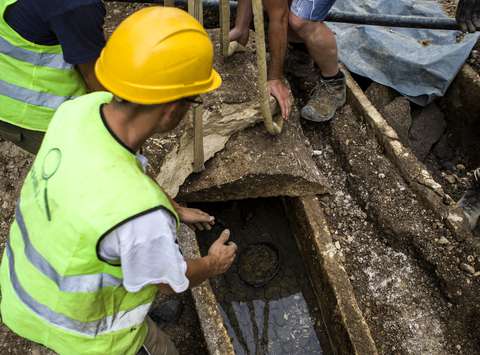
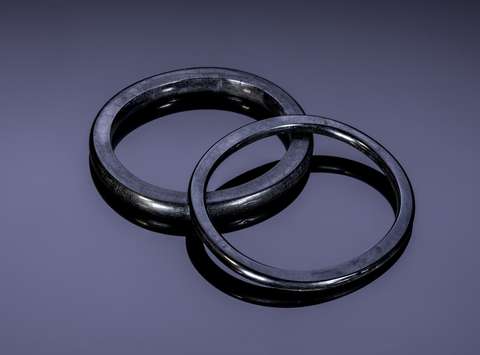
News
During July and August, the City Museum of Ljubljana is switching to its summer opening hours, which means that our doors will also stay open on Mondays! We are inviting everyone to the Auersperg Palace, which reveals the rich heritage that Ljubljana and its surroundings offer.
On Museums on a Summer Night, we are opening our doors for visitors.
Incredible finds, discovered by archaeologists during the latest excavations at the Gosposvetska Street, have been extensively presented in an article published in the February issue of National Geographic Slovenia. The magazine’s editorial board in Washington also recognised the importance of these finds and wrote about it on their website, read by millions of readers from all over the world.
